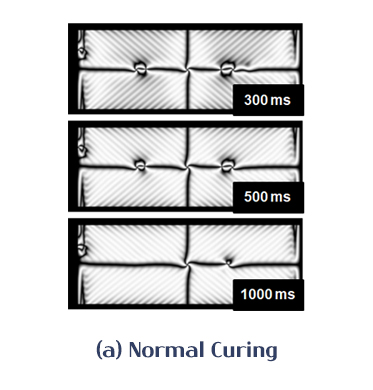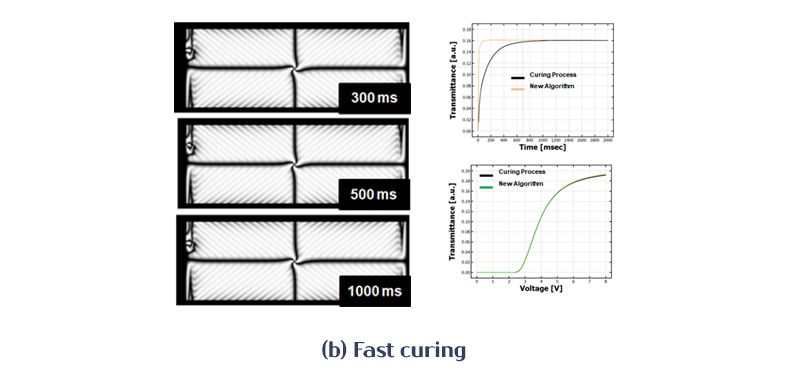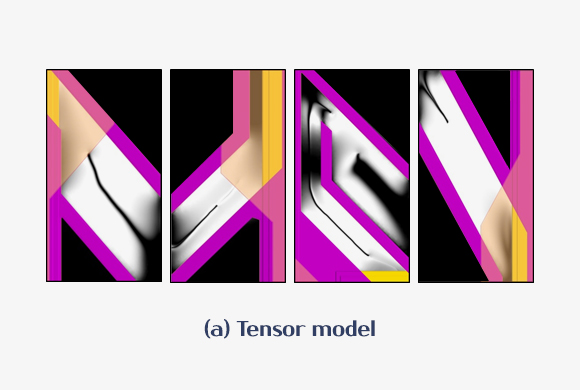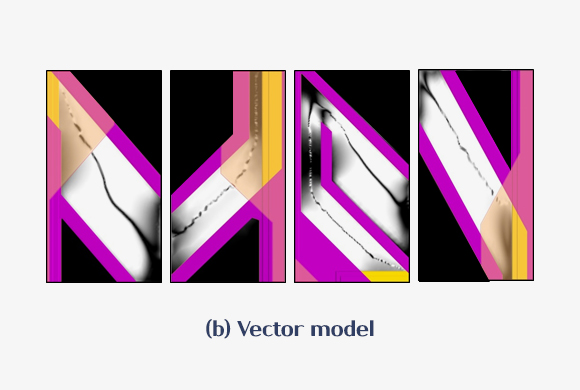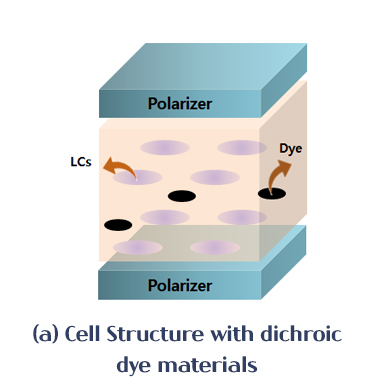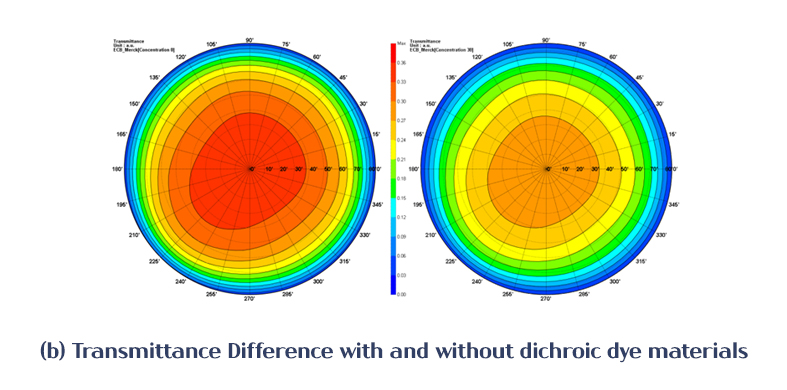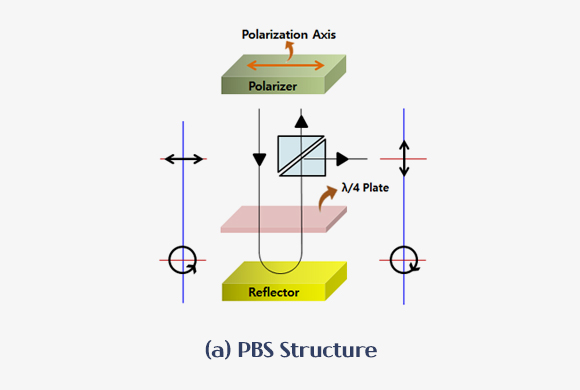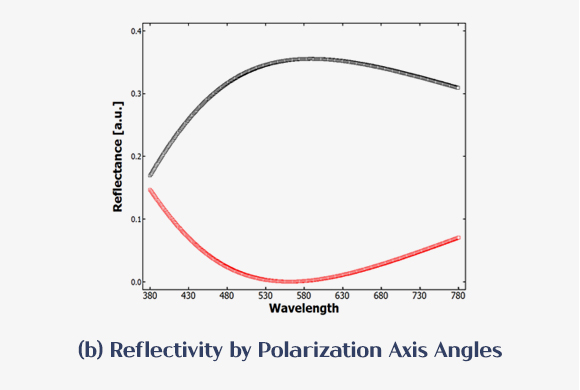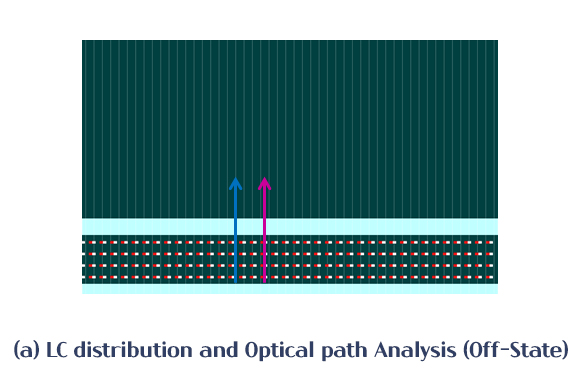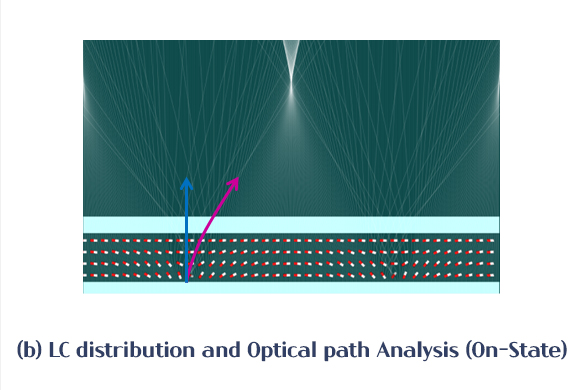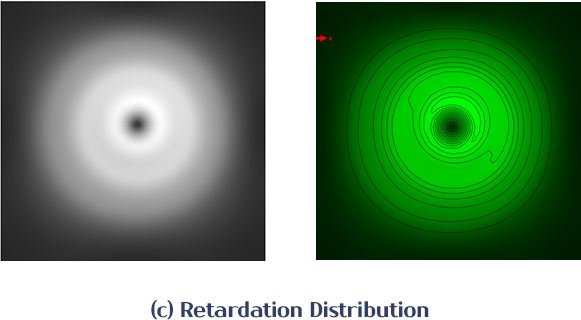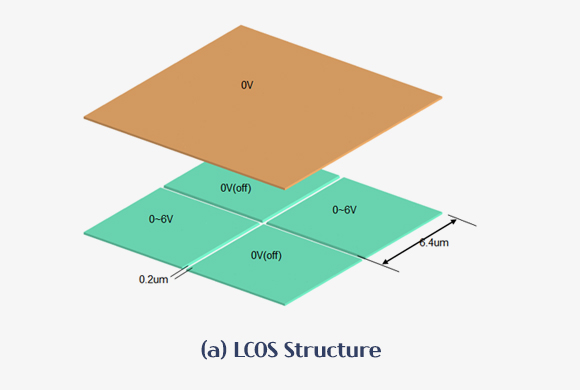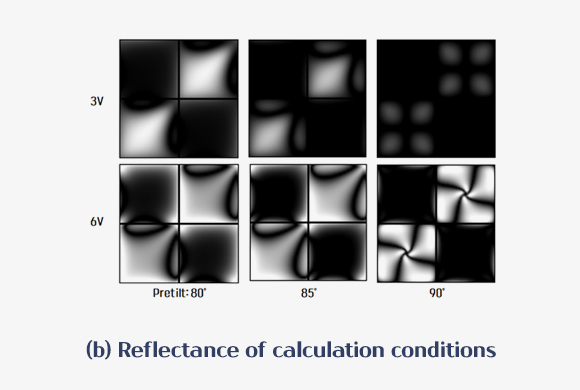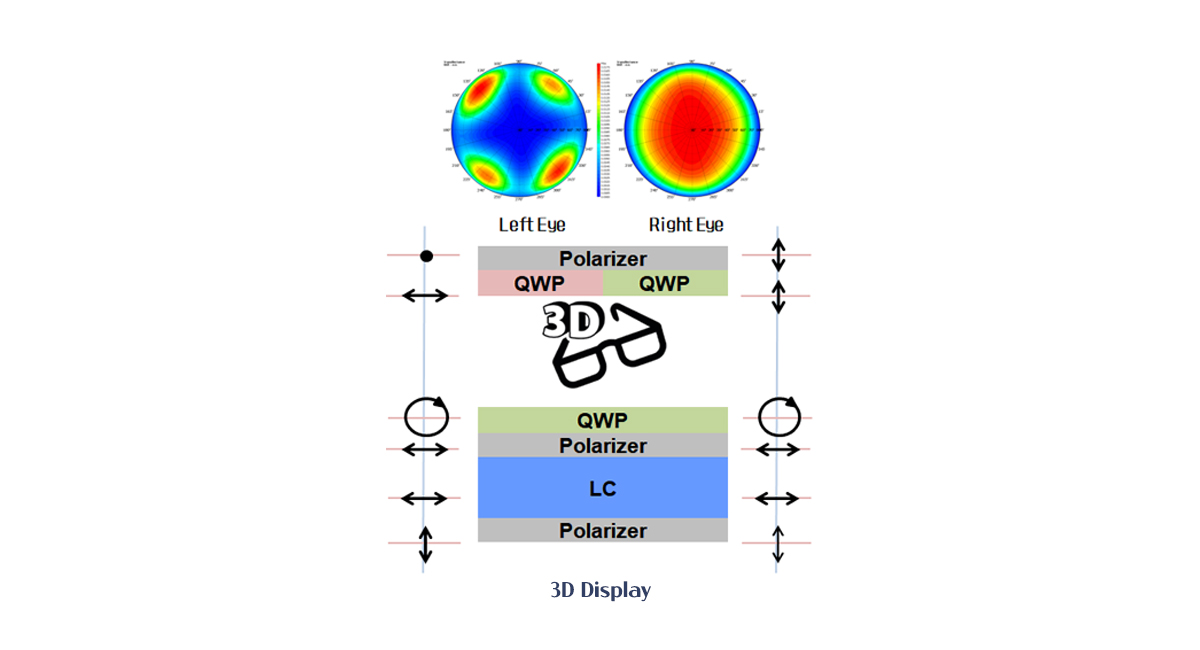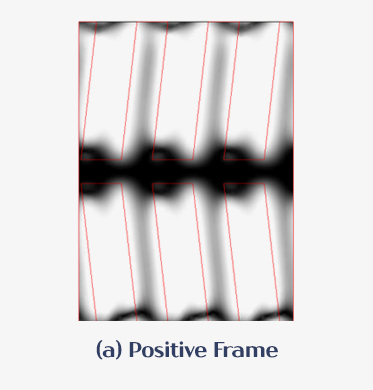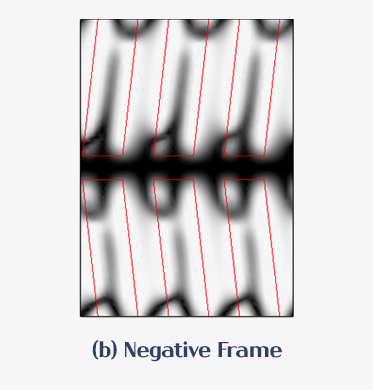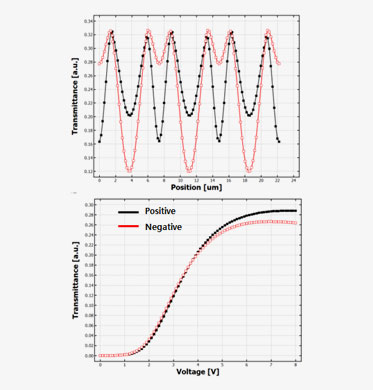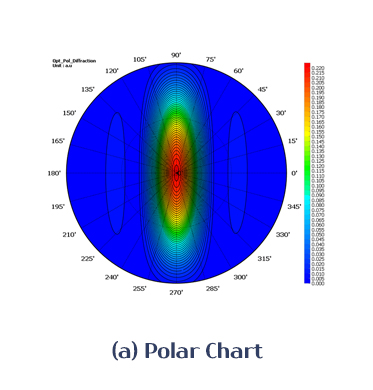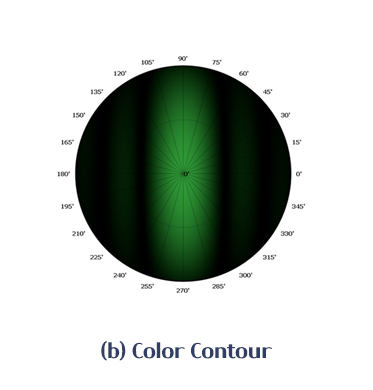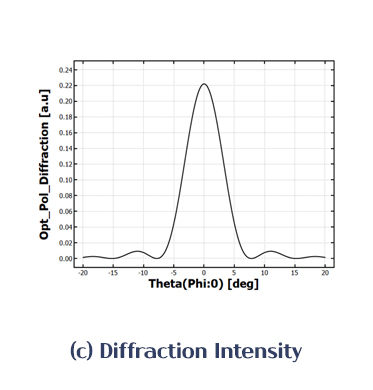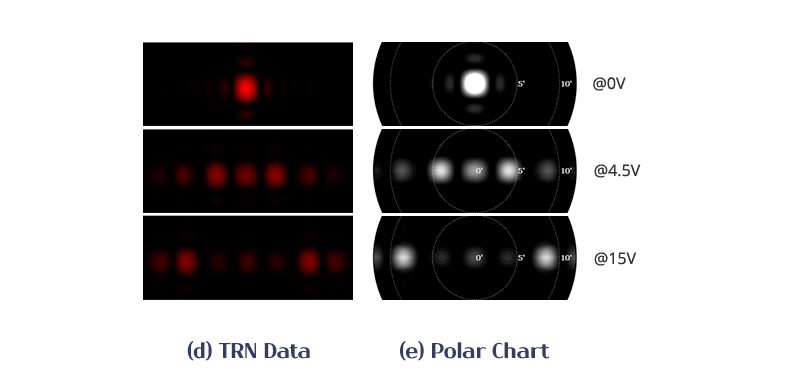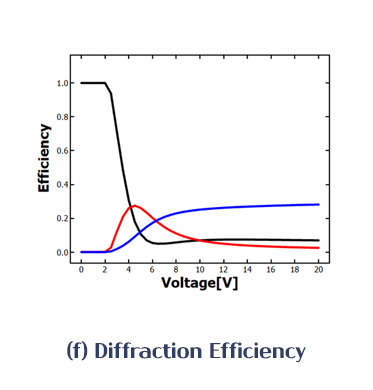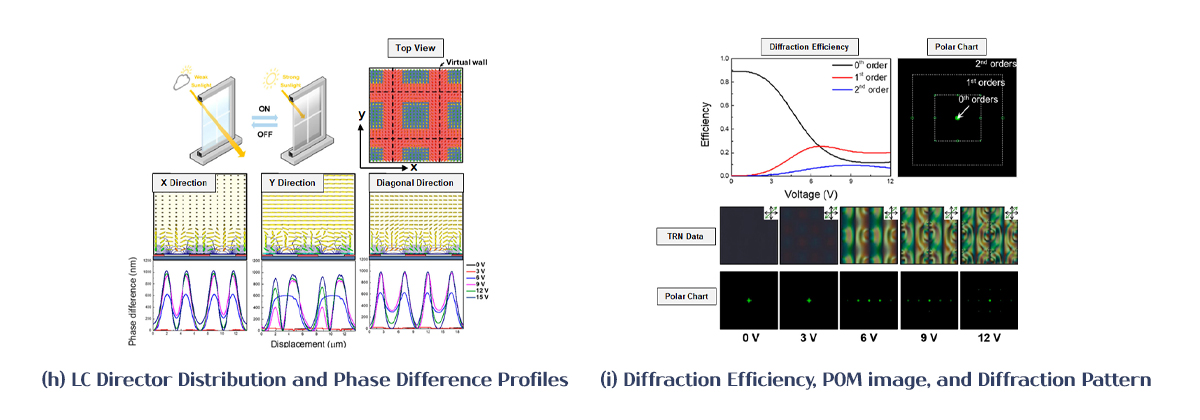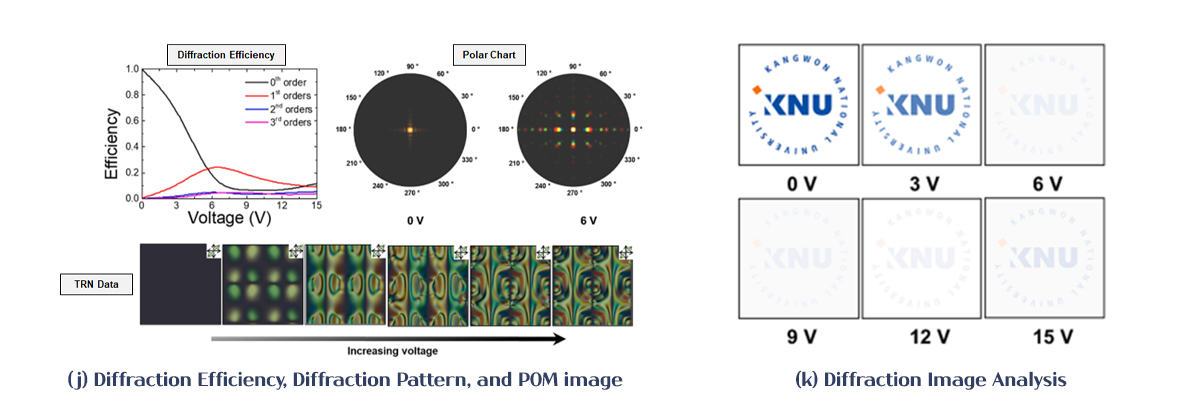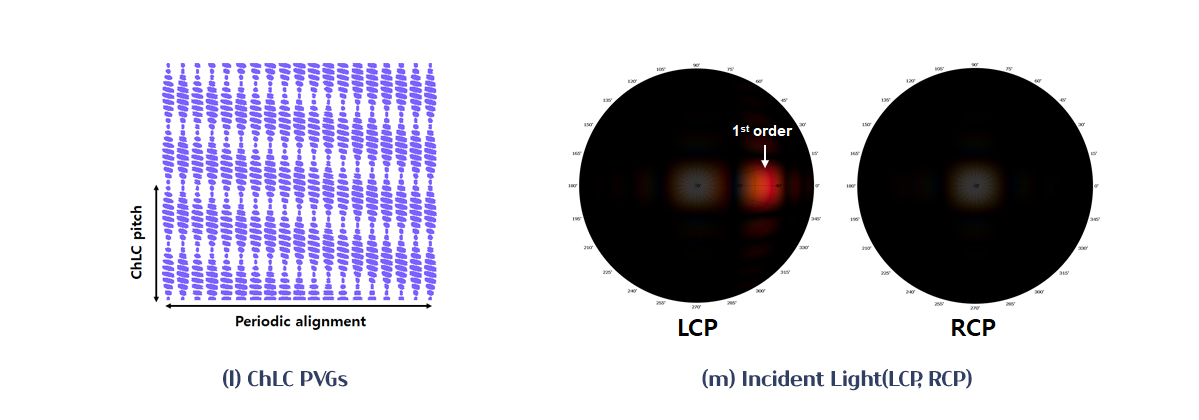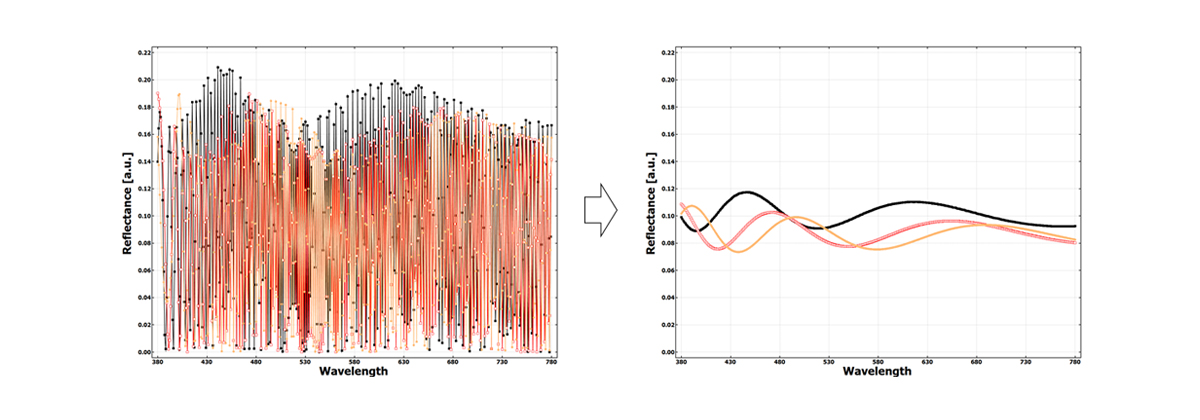LCD Application
- LC mode
- PBS
- LC Lenses
- LCOS
- 3D Display
- Flexoelectric Effect
- Diffraction Analysis
- Incoherent
- Bottom Reflection
PSVA Simulation
PSVA mode needs additional processes after the formation of the VA layer: Certain voltage larger than the threshold voltage is applied to the mixture of LC cells and reactive monomers with a slight tilt angle for photo-alignment, and irradiate UV light for curing. Curing, UV rubbing, and voltage-dependent transmittance (V-T) curves should be analyzed to confirm the electro-optical properties of PSVA mode. Fast Curing Algorithm is the best way to shorten the analysis time for curing while maintaining consistency.
VA-IPS Simulation
Nematic liquid crystals are physically described as the same energy in the n and -n directions but have different energy states in the vector model. When simulating the LC modes which occur topologically discontinuous phase transitions such as pi-cell, OCB, and VA-IPS, the Tensor Model function should be performed by assuming n and -n directions of LC cells are the same.
PBS Simulation
LCOS is a sandwich-like structure that contains LC cells between silicon backplane and cover glass.
The PBS function should be selected to obtain the results considering the changing status of the polarized light because there are a reflector, a quarter-wave plate, and multiple beam splitters on the inner side of LCOS in general.
2D LC Lens Simulation
LC lens has been considered as a promising field of research in optical systems by the advantages of small size and variable focus.
It’s possible to vary the focal length within a limited space since the refractive index of LC materials can be tuned by the application of a voltage. In the LC lens structure, calculation of optical path difference and focal length, and advanced LC analysis including LC director distribution by applied voltage can be performed through TechWiz Ray 2D and 3D.
- #TechWiz Ray 2D #TechWiz LCD 3D
LCOS Simulation
LCOS has a lot of advantages such as high resolution because it uses silicon backplane. However, texture patterns are formed due to the interaction between electric fields with adjacent cells in reflective LCOS. Engineers have to design the cell carefully to improve the transmittance.
3D Display Simulation
3D glasses can be classified as polarized and shutter glasses types that are widely used in the 3D display industry. 3D display with polarizer which polarizes the light differently for the left and right eyes and compatible polarized 3D glasses should be required to provide depth perception to the observer as three-dimensional images. From a viewing experience point of view, crosstalk may occur through the process of perceiving 3D images. The simulation by the viewing angles should be considered for designing 3D displays to get the correct solution.
- #TechWiz LCD 1D
Flexoelectric Efffect Simulation
Non-uniformity of voltage distribution in positive and negative frames induced by flexoelectric effect causes residual voltage and image-flickering. To overcome the image-quality under the flexoelectric effect, panel design and defect analysis can be performed by specifying particular splay and bend flexoelectric coefficients (𝑒_𝑠 𝑎𝑛𝑑 𝑒_𝑏).
Diffraction Simulation
A diffraction patterns are caused by grating structures of LCD panel. By Far-field equation, the diffracted light is calculated as sum of Electric fields of the output light passing through grating medium.
It will be very helpful to design the grating models considering the diffraction effect based on the polar chat and image result files.
Polarization Volume Gratings(PVGs) simulations can be also performed to identify the 1st order reflectance.
- Smart Window
-
[1] C.-H. Han, T.-H. Choi, W.-S. Kim, S.-W. Oh, Diffractive liquid crystal device for privacy
window with a low operating voltage, J. Inf. Disp. 24 249–254(2023). -
[2] C.-H. Han, S.-W. Oh, A high-haze liquid crystal grating device with asymmetric
anchoring energies, Displays 81 102581 (2024).
Incoherent
If the multi-layer structure contains thick layers, interference fringes are created from the transmission/reflection spectrum data for multi-reflection calculations.
Using the Incoherent function, users can check the effective results which interference fringes because of thick layers are removed.
Bottom Reflection
LCD panels are made up of multiple layers with different refractive indices. Multi reflection between layers occurs by BLU.
Using the Reflection (Bottom Side) function of the Berreman optic solver, users can effectively analyze multi reflection results.


